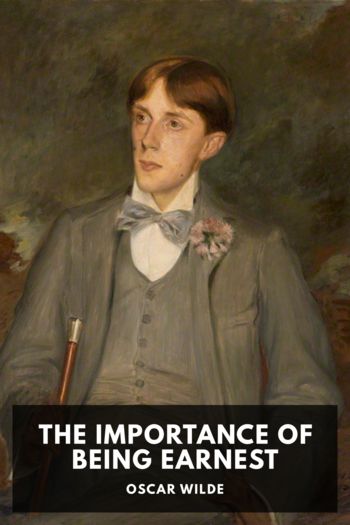Living History, Unknown [books to read in your 20s female TXT] 📗

- Author: Unknown
Book online «Living History, Unknown [books to read in your 20s female TXT] 📗». Author Unknown
Stepping into the Roosevelt Room is stepping back into American history. You are surrounded by banners from every U.S. military campaign and flags from each division of the U.S. Armed Forces, portraits of Theodore and Franklin Roosevelt and the Nobel Peace Prize medal that Theodore Roosevelt won in 1906 for mediating a settlement of the Russo-Japanese War. During our time in the White House, I added a small bronze bust of Eleanor Roosevelt so that her contributions as a “Roosevelt” would also be acknowledged in the room named for her uncle and husband.
In this historic room, Bill declared that his administration would present a health care reform plan to Congress within one hundred days―a plan that “would take strong action to control health care costs in America and to begin to provide for the health care needs of all Americans.”
Then he announced that I would chair a newly formed President’s Task Force on National Health Care Reform, which would include the Secretaries of Health and Human Services, Treasury, Defense, Commerce and Labor, as well as the Directors of Veterans Affairs and of the Office of Management and Budget and senior White House staff. Bill explained that I would work with Ira, the cabinet and others to build on what he had sketched out in the campaign and in his inaugural address. “We’re going to have to make some tough choices in order to control health care costs … and to provide health care for all,” he said. “I am grateful that Hillary has agreed to chair the task force, and not only because it means she’ll be sharing some of the heat I expect to generate.”
Heat came from all directions. The announcement was a surprise inside the White House and federal agencies. A few on Bill’s staff had assumed I would be named domestic policy adviser (which Bill and I had never discussed). Others thought I would work on education or children’s health, largely because of my past experiences on these issues.
Maybe we should have told more staff members, but sensitive internal information was already flowing out of the White House, and Bill wanted to break the story himself and answer the first questions raised.
Many White House aides thought it was a great idea. Several of Bill’s key lieutenants heartily endorsed the idea, including Robert Rubin, Chairman of the National Economic Council and later Secretary of the Treasury. One of my favorite people in the administration, Bob is fabulously smart and successful, yet thoroughly self-effacing. He later joked about his extraordinary political acumen: He didn’t think my appointment would generate such intense political fallout. I was surprised by the reaction, too.
Some of our friends gave us lighthearted warnings about what lay ahead. “What did you do to make your husband so mad at you?” Mario Cuomo, then Governor of New York, asked me during a White House visit.
“What do you mean?”
“Well,” Mario replied, “he’d have to be awfully upset about something to put you in charge of such a thankless task.”
I heard the warnings, but I didn’t fully realize the magnitude of what we were undertaking.
My work in Arkansas running the rural health care task force and the Arkansas Education Standards Commit tee didn’t rival the scale of health care reform. But both efforts were considered successful and made me excited and hopeful as I took on this new challenge. The biggest problem seemed to be the deadline that Bill announced. He had won the election in a three-way race with less than a majority of the popular vote―43
percent―and he couldn’t afford to lose whatever political momentum he had at the beginning of the new administration. James Carville, our friend, adviser and one of the most brilliant tactical minds in American politics, had given Bill this warning: “The more time we allow for the defenders of the status quo to organize, the more they will be able to marshal opposition to your plan, and the better their chances of killing it.”
Democrats in Congress were also urging us to move quickly. A few days after Bill’s announcement, House Majority Leader Dick Gephardt asked to meet with me. He was known on Capitol Hill for his Midwestern roots and sensibilities, as well as his command of budget issues. His compassion for people in need reflected his upbringing, and his commitment to health care reform was heightened by his son’s bout with cancer years earlier. Through position and experience, Gephardt would be a leading voice in any health care deliberations in the House. On February 3, Gephardt and his top health care aide came to my West Wing office to discuss strategy. For the next hour, we listened as Gephardt outlined his concerns about health care reform. It was an intense meeting.
One of Gephardt’s chief worries was that we would be unable to unify Democrats, who were seldom united under the best of circumstances. Health care reform widened existing divisions. I thought of the old Will Rogers joke:
“Are you a member of any organized political party?”
“No, I’m a Democrat.”
I knew of the potential divisiveness but hoped that a Democratic Congress would rally around a Democratic President to show what the party could accomplish for America.
Democratic members had already begun to outline their own models for reform in order to influence the President’s plans. Some proposed a “single payer” approach, modeled on the European and Canadian health care systems, which would replace the current employer-based system. The federal government, through tax payments, would become the sole financier-or single payer-of most medical care. A few favored a gradual expansion of Medicare that would eventually cover all uninsured Americans, starting first with those aged fifty-five to sixty-five.
Bill and other Democrats rejected the single-payer and Medicare models, preferring a quasi-private system called “managed competition” that relied on





Comments (0)